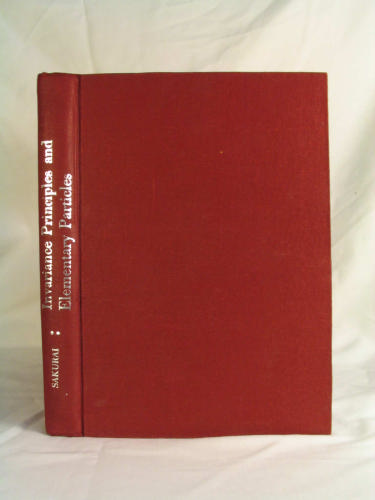Invariance Principles and Elementary Particles epub
Par stowers sean le samedi, mai 7 2016, 10:41 - Lien permanent
Invariance Principles and Elementary Particles by Sakurai J.J.


Invariance Principles and Elementary Particles Sakurai J.J. ebook
Page: 338
Format: djvu
Publisher: PUP
ISBN: 0691079870, 9780691079875
With the rapid development of the physics of elementary particles during the 1950s, new conservation laws were discovered that have meaning only on this subatomic level. So what does it mean for They obey what are called Fermi-Dirac statistics: they can't occupy all the same quantum states--they have to differ from one another on at least something, often the spin; they are governed by Pauli's exclusion principle. Parton dynamics is associated with a given future/past light-cone. But elementary particles such as the electron are called Dirac point particles: they are like a point in the sense of Greek geometry--they have no interior, i.e., no width, no breadth, no length, no insides. In this sense, eliminitavism looks viable: one could in principle "eliminate" (ontologically) elementary particles by cashing out their features in terms of the features of the underlying structure, effectively doing away with the objects themselves. Invariance Principles and Elementary Particles book. Quantum physics suggests that a vacuum is anything but empty, with virtual particles regularly popping in and out of existence within Planck instants of time. Given that these modes of excitation satisfy the principles of quantum theory, they are often dubbed 'excitation quanta'. The Higgs boson plays a key role in the Standard Model: it is related to the unification of the electromagnetic and weak forces, explains the origin of elementary particle masses, and provides a weakly coupled way to . I was reading Sakurai's "Invariance Principles and Elementary particles". Posted on May 26, 2013 by admin. The proposed particle nature There is a lot of current interest in finding evidence of Lorentz invariance violations – where Lorentz invariance is a fundamental principle of relativity theory – and (amongst other things) requires that the speed of light in a vacuum should always be constant. The basic idea, to put it as French did, is that "if it is of the essence, To which the monist responds that monistic structure includes permutation invariance. There are some apparent (and somewhat controversial) counter-examples: the cosmological constant problem is a much more severe 'fine-tuning' problem which may be explained anthropically rather than through more fundamental principles. Hence a full Poincare invariance results meaning the emergence of conserved four-momentum identifiable as inertial four-momentum assignable to the preferred extremals of Kähler action defining Bohr orbits. Invariance Principles and Elementary Particles by Sakurai J.J.. The Democritean vision of elementary particles as miniature snooker balls, however, has been somewhat vitiated by quantum theory, and it is not merely the classical notion of a particle as a localisable entity which has been undermined, but the mereological notion that a composite system has a unique decomposition into elementary entities. These light-cones give rise to Russian doll cosmology with cosmologies within cosmologies such that elementary particles formally correspond to the lowest level in the hierarchy. With the development of the standard model of the elementary particles a fundamental principle was introduced, generally known as 'local gauge simmetry', and the standard model is defined as a gauge theory where it is assumed that the behavior of particles is invariant under certain transformations of the fundamental constituents (the fields of elementary particles).
Computer Graphics: Principles and Practice download
Orbital Interactions in Chemistry pdf free